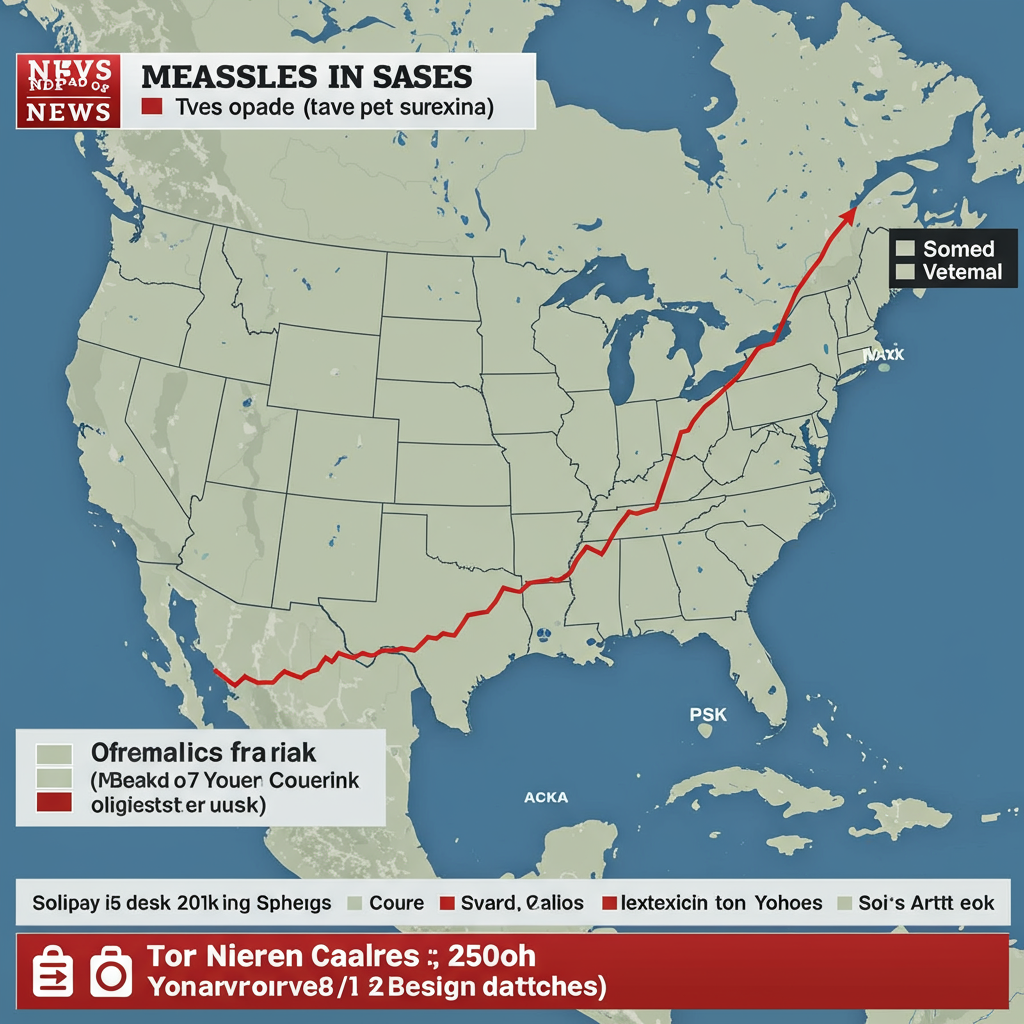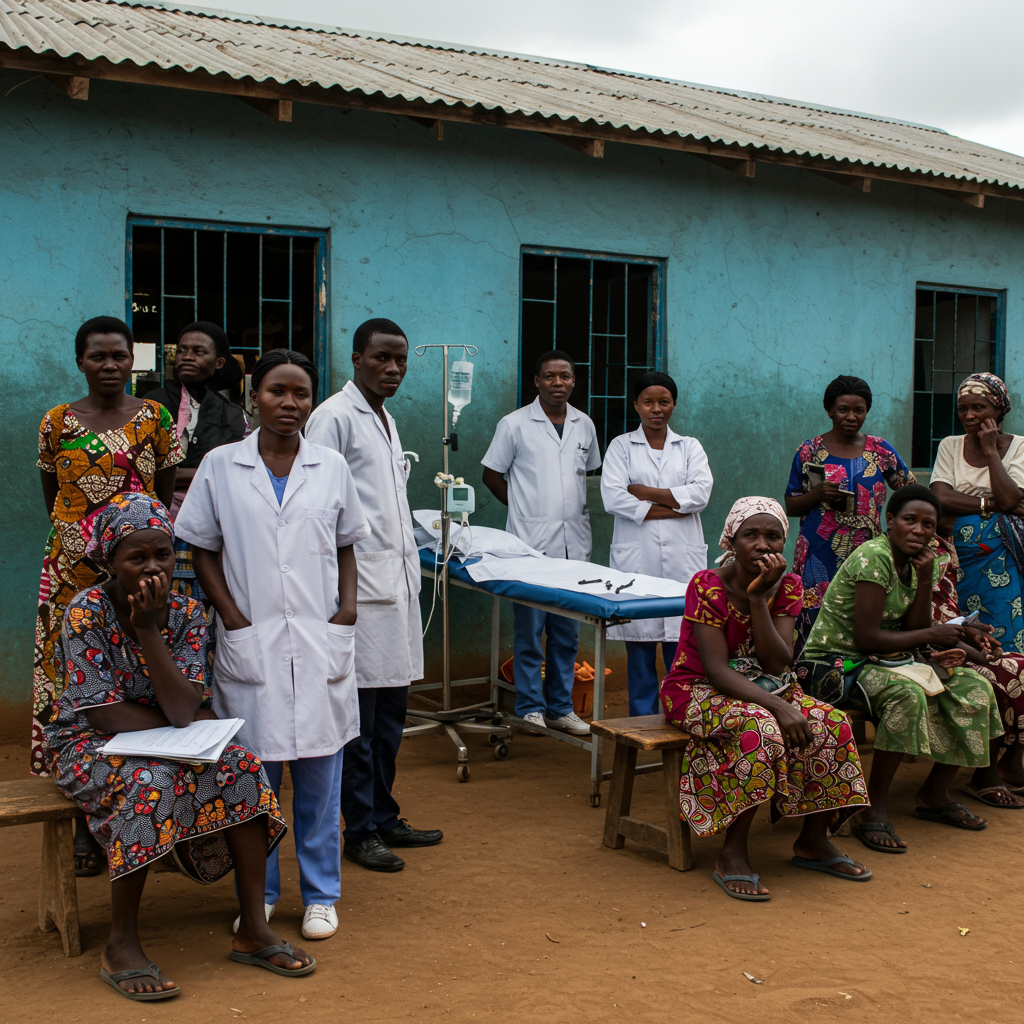measles is rapidly re-emerging across the United States, with the latest figures from the Centers for Disease Control and Prevention (CDC) showing a dramatic increase that positions the nation precariously close to a modern-day peak not seen since the disease was declared eliminated here in 2000. A recent CDC update revealed 40 new infections, pushing the 2024 total to 1,267 cases. This tally is now just 8 cases shy of surpassing the 2019 total of 1,274, which currently stands as the highest count in the post-elimination era.
This alarming rise isn’t solely due to one major outbreak. While a large cluster of cases in West Texas has reportedly slowed its spread, public health officials are tracking a growing number of smaller outbreaks and infections linked to international travel. The CDC recently confirmed four additional outbreaks, bringing the total number of active clusters across the U.S. this year to 27. To put this in perspective, the entire year of 2023 saw only 16 measles outbreaks nationwide. A staggering 88% of confirmed U.S. cases this year have been directly linked to these identified outbreaks, highlighting the concentrated spread within connected groups.
A Growing Crisis Across the Americas
The surge in U.S. measles cases is unfolding alongside even more significant outbreaks in neighboring Canada and Mexico, painting a concerning regional picture. The Pan American Health Organization (PAHO) recently reported a dramatic 29-fold increase in measles cases across the Americas region compared to the same period in the previous year.
PAHO data indicates that cases across the region began to climb in the third week of the year, peaking in late April. Infections are heavily concentrated in communities where vaccine uptake is low or hesitant across multiple areas. While the largest proportion of cases has been observed in children and young adults, data shows the incidence rate – the rate of new cases per population – is highest in younger children. Regional figures reveal that 30% of patients were unvaccinated, but for a large 65% majority, vaccination status remains unknown. Both Canada and Mexico have experienced substantial outbreaks: Canada has reported 3,170 confirmed cases, tragically including one death, marking its highest number since achieving elimination in 1998. Mexico has recorded 2,597 cases with nine deaths, with the majority centered in Chihuahua state. While significant transmission has occurred within specific communities, health officials warn that outbreaks can easily ignite wherever there are pockets of people vulnerable due to being undervaccinated.
Understanding the Drivers: Why Measles is Spreading
The primary driver behind the current measles resurgence is simple yet critical: declining vaccination rates leave populations vulnerable. Measles is one of the most contagious diseases known. It spreads easily through the air when an infected person coughs or sneezes, and the virus can linger in the air and on surfaces for up to two hours. This means even brief exposure can lead to infection if a person isn’t immune.
Experts point to a decline in routine childhood vaccinations during the first two years of the COVID-19 pandemic as a significant factor contributing to the resurgence of diseases like measles. Studies have shown a notable drop in vaccination rates. For example, CDC data from last year showed that MMR (measles, mumps, and rubella) vaccine coverage among U.S. kindergartners fell below the critical 95% threshold needed for herd immunity, dropping to 92.7% during the 2023-2024 school year. Furthermore, a study published in JAMA found that MMR vaccination rates have decreased in 78% of U.S. counties since the beginning of the pandemic. These vaccination gaps, particularly when clustered in specific communities, create fertile ground for the virus to spread rapidly once introduced. Travel-related cases, where someone is infected abroad and brings the virus back, are often the spark that ignites outbreaks in these undervaccinated pockets.
State-by-State Breakdown: Local Outbreaks Emerge
The national picture is comprised of numerous local situations and outbreaks spreading across states.
Wyoming confirmed its first measles case in 15 years, involving an unvaccinated child in Natrona County. The source of the infection is still under investigation, but potential public exposure occurred during brief visits to a Casper emergency department in late June. State Health Officer Alexia Harrist emphasized that measles is preventable and stressed the safety and effectiveness of the MMR vaccine, noting two doses offer about 97% protection.
Utah recently reported two additional cases, bringing its total for the year to nine. These follow the state’s initial confirmed cases earlier this year. The state has also reported three cases in unvaccinated adults.
Michigan saw a new case in Kent County (Grand Rapids) in a young child who had recently traveled internationally. This marks the county’s second case and the state’s 17th confirmed infection this year.
Florida reported its third case of the year in a young adult from Leon County (Tallahassee) who was exposed during international travel in June.
Kansas reported three new cases, bringing its total to 83. These latest cases are linked to an outbreak in the southwestern part of the state that is connected to the larger West Texas outbreak. Eighty of Kansas’s cases are tied to this main outbreak spanning 11 counties.
New Mexico has reported 94 total cases, with a recent cluster of eight new cases confirmed in Luna County. This outbreak is linked to a detention facility in Deming, where cases were detected after health officials identified the virus in wastewater samples from the area, hinting at undetected infections. Some New Mexico cases are also linked to the West Texas outbreak.
- Kentucky has also reported an outbreak, with four of its five total cases linked to spread that began in Woodford County and has since expanded into neighboring Fayette County in central Kentucky.
- www.cidrap.umn.edu
- www.cidrap.umn.edu
- www.cidrap.umn.edu
- www.cidrap.umn.edu
- www.cidrap.umn.edu
The Importance of Protection: Why Vaccination Matters
Measles is far more serious than just a rash. It can lead to severe health complications, including pneumonia, encephalitis (swelling of the brain), and even death. This year alone, 12% of U.S. case-patients have required hospitalization, with a significantly higher rate of 21% among children aged 5 and under. Tragically, three deaths have been reported among confirmed cases. The overwhelming majority of individuals infected – 95% – were either unvaccinated or had an unknown vaccination status, underscoring that this is largely a preventable crisis.
The MMR vaccine is incredibly effective at preventing measles. Two doses are approximately 97% effective, and one dose is about 93% effective. Achieving and maintaining high vaccination coverage, ideally 95% or higher, is crucial for community immunity, also known as herd immunity. This high level of protection helps prevent the spread of measles, safeguarding not only vaccinated individuals but also those who cannot be vaccinated due to age or medical conditions. Ensuring you and your children are up-to-date on MMR vaccinations is the most effective action you can take to protect against this highly contagious and potentially dangerous disease.
Frequently Asked Questions
What is the current situation with measles cases in the US?
The U.S. is experiencing a significant surge in measles cases in 2024, nearing a modern-day record. As of the latest CDC update, there are 1,267 confirmed cases nationwide, just 8 cases short of the 2019 total, which was the highest since measles was eliminated in 2000. This rise is driven by 27 distinct outbreaks this year, compared to 16 in the entirety of the previous year, with 88% of cases linked to these clusters.
Where are major measles outbreaks currently happening in the US?
Significant measles outbreaks are ongoing in several states. A large outbreak in West Texas is a major contributor, though transmission has slowed in most counties there. Related cases have spread to southwest Kansas. New Mexico is also reporting a substantial number of cases, with a recent cluster linked to a detention facility and wastewater detection. Kentucky has an outbreak spreading between Woodford and Fayette counties. Smaller case clusters or travel-related infections are also being reported in states like Wyoming, Utah, Michigan, and Florida.
How can individuals protect themselves and their families from measles?
The best protection against measles is the MMR (measles, mumps, and rubella) vaccine. Health officials strongly recommend ensuring that you and your family members are up-to-date on MMR vaccinations according to recommended schedules. Two doses of the MMR vaccine are about 97% effective at preventing measles. Checking your vaccination records or consulting with a healthcare provider is essential, especially if you are unsure of your status or have plans for international travel.
The current surge in measles cases is a stark reminder of the importance of vaccination and maintaining high levels of community immunity. As cases continue to rise and outbreaks spread, public health officials urge everyone to confirm their vaccination status and get vaccinated if needed. Protecting yourself with the safe and highly effective MMR vaccine is the key step in preventing further spread of this dangerous disease and safeguarding public health.
Word Count Check: 1178




